The main ways of solving the Fermi Paradox are:
1) They are already here (at least in the form of their signals)
2) They do not disseminate in the universe, do not leave traces, and not send signals. That is, they do not start a shock wave of intelligence.
3) The civilizations are extremely rare.
Additional way of thinking is 4): we are unique civilization because of observation selection
All of them have a sad outlook for global risk:
In the first case, we are under threat of conflict with superior aliens.
1A) If they are already here, we can do something that will encourage them to destroy us, or restrict us. For example, turn off the simulation. Or start the program of probes-berserkers. This probes cold be nanobots. In fact it could be something like “Space gray goo” with low intelligence but very wide spreading. It could even be in my room. The only goal of it could be to destroy other nanobots (like our Nanoshield would do). And so we will see it until we create our own nanobots.
1b) If they open up our star system right now and, moreover, focused on total colonization of all systems, we are also will fight with them and are likely to lose. Not probable.
1c) If a large portion of civilization is infected with SETI-virus and distributes signals, specially designed to infect naive civilizations — that is, encourage them to create a computer with AI, aimed at the further replication by SETI channels. This is what I write in the article Is SETI dangerous? http://www.proza.ru/texts/2008/04/12/55.html
1d) By the means of METI signal we attract attention of dangerous civilization and it will send to the solar system a beam of death (probably commonly known as gamma-ray burst). This scenario seems unlikely, since for the time until they receive the signal and have time to react, we have time to fly away from the solar system — if they are far away. And if they are close, it is not clear why they were not here. However, this risk was intensely discussed, for example by D. Brin.
2. They do not disseminate in space. This means that either:
2a) Civilizations are very likely to destroy themselves in very early stages, before it could start wave of robots replicators and we are not exception. This is reinforced by the Doomsday argument – namely the fact that I’m discovering myself in a young civilization suggests that they are much more common than the old. However, based on the expected rate of development of nanotechnology and artificial intelligence, we can start a wave of replicators have in 10–20 years, and even if we die then, this wave will continue to spread throughout the universe. Given the uneven development of civilizations, it is difficult to assume that none of them do not have time to launch a wave of replicators before their death. This is possible only if we a) do not see an inevitable and universal threat looming directly on us in the near future, b) significantly underestimate the difficulty of creating artificial intelligence and nanoreplicators. с) The energy of the inevitable destruction is so great that it manages to destroy all replicators, which were launched by civilization — that is it is of the order of a supernova explosion.
2b) Every civilization sharply limit itself — and this limitation is very hard and long as it is simple enough to run at least one probe-replicator. This restriction may be based either on a powerful totalitarianism, or the extreme depletion of resources. Again in this case, our prospects are quite unpleasant. Bur this solution is not very plausible.
3) If civilization are rare, it means that the universe is much less friendly place to live, and we are on an island of stability, which is likely to be an exception from the rule. This may mean that we underestimate the time of the future sustainability of the important processes for us (the solar luminosity, the earth’s crust), and most importantly, the sustainability of these processes to small influences, that is their fragility. I mean that we can inadvertently break their levels of resistance, carrying out geo-engineering activities, the complex physics experiments and mastering space. More I speak about this in the article: “Why antropic principle stopped to defend us. Observation selection and fragility of our environment”. http://www.scribd.com/doc/8729933/Why-antropic-principle-stops-to-defend-us-Observation-selection-and-fragility-of-our-environment- See also the works of M.Circovic on the same subject.
However, this fragility is not inevitable and depends on what factors were critical in the Great filter. In addition, we are not necessarily would pressure on this fragile, even if it exist.
4) Observation selection makes us unique civilization.
4a. We are the first civilization, because any civilization which is the first captures the whole galaxy. Likewise, the earthly life is the first life on Earth, because it would require all swimming pools with a nutrient broth, in which could appear another life. In any case, sooner or later we will face another first civilization.
4b. Vast majority of civilizations are being destroyed in the process of colonization of the galaxy, and so we can find ourselves only in the civilization which is not destroyed by chance. Here the obvious risk is that those who made this error, would try to correct it.
4c. We wonder about the absence of contact, because we are not in contact. That is, we are in a unique position, which does not allow any conclusions about the nature of the universe. This clearly contradicts the Copernican principle.
The worst variant for us here is 2a — imminent self-destruction, which, however, has independent confirmation through the Doomsday Argument, but is undermine by the fact that we do not see alien von Neuman probes. I still believe that the most likely scenario is a Rare earth.
Category: existential risks

Post-human Earth: How the planet will recover from us
Although this is the scenario we all hope (and work hard) to avoid — the consequences should be of interest to all who are interested in mitigation of the risk of mass extinction:
“WHEN Nobel prize-winning atmospheric chemist Paul Crutzen coined the word Anthropocene around 10 years ago, he gave birth to a powerful idea: that human activity is now affecting the Earth so profoundly that we are entering a new geological epoch.
The Anthropocene has yet to be accepted as a geological time period, but if it is, it may turn out to be the shortest — and the last. It is not hard to imagine the epoch ending just a few hundred years after it started, in an orgy of global warming and overconsumption.
Let’s suppose that happens. Humanity’s ever-expanding footprint on the natural world leads, in two or three hundred years, to ecological collapse and a mass extinction. Without fossil fuels to support agriculture, humanity would be in trouble. “A lot of things have to die, and a lot of those things are going to be people,” says Tony Barnosky, a palaeontologist at the University of California, Berkeley. In this most pessimistic of scenarios, society would collapse, leaving just a few hundred thousand eking out a meagre existence in a new Stone Age.
Whether our species would survive is hard to predict, but what of the fate of the Earth itself? It is often said that when we talk about “saving the planet” we are really talking about saving ourselves: the planet will be just fine without us. But would it? Or would an end-Anthropocene cataclysm damage it so badly that it becomes a sterile wasteland?
The only way to know is to look back into our planet’s past. Neither abrupt global warming nor mass extinction are unique to the present day. The Earth has been here before. So what can we expect this time?”
Read the entire article in New Scientist.
Also read “Climate change: melting ice will trigger wave of natural disasters” in the Guardian about the potential devastating effects of methane hydrates released from melting permafrost in Siberia and from the ocean floor.
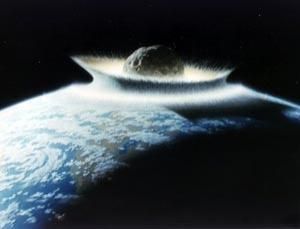
Asteroid attack: Putting Earth’s defences to the test
Peter Garretson from the Lifeboat Advisory Board appears in the latest edition of New Scientist:
“IT LOOKS inconsequential enough, the faint little spot moving leisurely across the sky. The mountain-top telescope that just detected it is taking it very seriously, though. It is an asteroid, one never seen before. Rapid-survey telescopes discover thousands of asteroids every year, but there’s something very particular about this one. The telescope’s software decides to wake several human astronomers with a text message they hoped they would never receive. The asteroid is on a collision course with Earth. It is the size of a skyscraper and it’s big enough to raze a city to the ground. Oh, and it will be here in three days.
Far-fetched it might seem, but this scenario is all too plausible. Certainly it is realistic enough that the US air force recently brought together scientists, military officers and emergency-response officials for the first time to assess the nation’s ability to cope, should it come to pass.
They were asked to imagine how their respective organisations would respond to a mythical asteroid called Innoculatus striking the Earth after just three days’ warning. The asteroid consisted of two parts: a pile of rubble 270 metres across which was destined to splash down in the Atlantic Ocean off the west coast of Africa, and a 50-metre-wide rock heading, in true Hollywood style, directly for Washington DC.
The exercise, which took place in December 2008, exposed the chilling dangers asteroids pose. Not only is there no plan for what to do when an asteroid hits, but our early-warning systems — which could make the difference between life and death — are woefully inadequate. The meeting provided just the wake-up call organiser Peter Garreston had hoped to create. He has long been concerned about the threat of an impact. “As a taxpayer, I would appreciate my air force taking a look at something that would be certainly as bad as nuclear terrorism in a city, and potentially a civilisation-ending event,” he says.”
Read the entire article at New Scientist. Read the NASA NEO report “Natural Impact Hazard Interagancy Deliberate Planning Exercise After Action Report”.
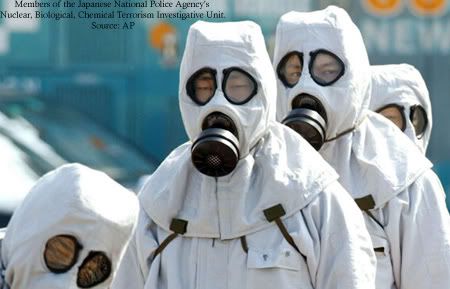
Keeping genes out of terrorists’ hands
Nature News reports of a growing concern over different standards for DNA screening and biosecurity:
“A standards war is brewing in the gene-synthesis industry. At stake is the way that the industry screens orders for hazardous toxins and genes, such as pieces of deadly viruses and bacteria. Two competing groups of companies are now proposing different sets of screening standards, and the results could be crucial for global biosecurity.
“If you have a company that persists with a lower standard, you can drag the industry down to a lower level,” says lawyer Stephen Maurer of the University of California, Berkeley, who is studying how the industry is developing responsible practices. “Now we have a standards war that is a race to the bottom.”
For more than a year a European consortium of companies called the International Association of Synthetic Biology (IASB) based in Heidelberg, Germany, has been drawing up a code of conduct that includes gene-screening standards. Then, at a meeting in San Francisco last month, two of the leading companies — DNA2.0 of Menlo Park, California, and Geneart of Regensburg, Germany — announced that they had formulated a code of conduct that differs in one key respect from the IASB recommendations.”
Read the entire article on Nature News.
Also read “Craig Venter’s Team Reports Key Advance in Synthetic Biology” from JCVI.
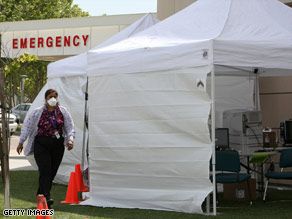
Swine Flu Update: are we entering an Age of Pandemics?
May 2: Many U.S. emergency rooms and hospitals crammed with people… ”Walking well” flood hospitals… Clinics double their traffic in major cities … ER rooms turn away EMT cases. — CNN
Update May 4: Confirmed cases of H1N1 virus now at 985 in 20 countries (Mexico: 590, 25 deaths) — WHO. In U.S.: 245 confirmed U.S. cases in 35 states. — CDC.
“We might be entering an Age of Pandemics… a broad array of dangerous emerging 21st-century diseases, man-made or natural, brand-new or old, newly resistant to our current vaccines and antiviral drugs…. Martin Rees bet $1,000 that bioterror or bioerror would unleash a catastrophic event claiming one million lives in the next two decades…. Why? Less forest, more contact with animals… more meat eating (Africans last year consumed nearly 700 million wild animals… numbers of chickens raised for food in China have increased 1,000-fold over the past few decades)… farmers cut down jungle, creating deforested areas that once served as barriers to the zoonotic viruses…” — Larry Brilliant, Wall Street Journal
From financial crisis to global catastrophe
From financial crisis to global catastrophe
Financial crisis which manifested in the 2008 (but started much earlier) has led to discussion in alarmists circles — is this crisis the beginning of the final sunset of mankind? In this article we will not consider the view that the crisis will suddenly disappear and everything returns to its own as trivial and in my opinion false. Transition of the crisis into the global catastrophe emerged the following perspective:
1) The crisis is the beginning of long slump (E. Yudkowsky term), which gradually lead mankind to a new Middle Ages. This point of view is supported by proponents of Peak Oil theory, who believe that recently was passed peak of production of liquid fuels, and since that time, the number of oil production begins to drop a few percent each year, according to bell curve, and that fossil fuel is a necessary resource for the existence of modern civilization, which will not be able to switch to alternative energy sources. They see the current financial crisis as a direct consequence of high oil prices, which brace immoderate consumption. The maintenance is the point of view is the of «The peak all theory», which shows that not only oil but also the other half of the required resources of modern civilization will be exhausted in the next quarter of century. (Note that the possibility of replacing some of resources with other leads to that peaks of each resource flag to one moment in time.) Finally, there is a theory of the «peak demand» — namely, that in circumstances where the goods produced more then effective demand, the production in general is not fit, which includes the deflationary spiral that could last indefinitely.
2) Another view is that the financial crisis will inevitably lead to a geopolitical crisis, and then to nuclear war. This view can be reinforced by the analogy between the Great Depression and novadays. The Great Depression ended with the start of the Second World War. But this view is considering nuclear war as the inevitable end of human existence, which is not necessarily true.
3) In the article “Scaling law of the biological evolution and the hypothesis of the self-consistent Galaxy origin of life”. (Advances in Space Research V.36 (2005), P.220–225” http://dec1.sinp.msu.ru/~panov/ASR_Panov_Life.pdf) Russian scientist A. D. Panov showed that the crises in the history of humanity became more frequent in curse of history. Each crisis is linked with the destruction of some old political system, and with the creation principle technological innovation at the exit from the crisis. 1830 technological revolution lead to industrial world (but peak of crisis was of course near 1815 – Waterloo, eruption of Tambora, Byron on the Geneva lake create new genre with Shelly and her Frankeshtain.) One such crisis happened in 1945 (dated 1950 in Panov’s paper – as a date of not the beginning of the crisis, but a date of exit from it and creation of new reality) when the collapse of fascism occurred and arose computers, rockets and atomic bomb, and bipolar world. An important feature of these crises is that they follow a simple law: namely, the next crisis is separated from the preceding interval of time to 2.67+/- 0.15 shorter. The last such crisis occurred in the vicinity of 1991 (1994 if use Panov’s formula from the article), when the USSR broke up and began the march of the Internet. However, the schedule of crisis lies on the hyperbole that comes to the singularity in the region in 2020 (Panov gave estimate 2004+/-15, but information about 1991 crisis allows to sharpen the estimate). If this trend continues to operate, the next crisis must come after 17 years from 1991 , in 2008, and another- even after 6.5 years in 2014 and then the next in 2016 and so on. Naturally it is desirable to compare the Panov’s forecast and the current financial crisis.
Current crisis seems to change world politically and technologically, so it fit to Panov’s theory which predict it with high accuracy long before. (At least at 2005 – but as I now Panov do not compare this crisis with his theory.) But if we agree with Panov’s theory we should not expect global catastrophe now, but only near 2020. So we have long way to it with many crisises which will be painful but not final. Continue reading “From financial crisis to global catastrophe” | >
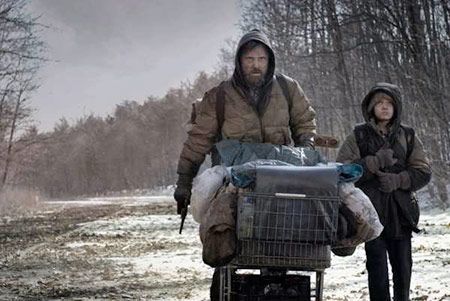
I Don’t Want To Live in a Post-Apocalyptic World
How About You?
I’ve just finished reading Cormac McCarthy’s The Road at the recommendation of my cousin Marie-Eve. The setting is a post-apocalyptic world and the main protagonists — a father and son — basically spend all their time looking for food and shelter, and try to avoid being robbed or killed by other starving survivors.
It very much makes me not want to live in such a world. Everybody would probably agree. Yet few people actually do much to reduce the chances of of such a scenario happening. In fact, it’s worse than that; few people even seriously entertain the possibility that such a scenario could happen.
People don’t think about such things because they are unpleasant and they don’t feel they can do anything about them, but if more people actually did think about them, we could do something. We might never be completely safe, but we could significantly improve our odds over the status quo.
Danger From Two Directions: Ourselves and Nature.
Human technology is becoming more powerful all the time. We already face grave danger from nuclear weapons, and soon molecular manufacturing technologies and artificial general intelligence could pose new existential threats. We are also faced with slower, but serious, threats on the environmental side: Global warming, ocean acidification, deforestation/desertification, ecosystem collapse, etc.
Continue reading “I Don’t Want To Live in a Post-Apocalyptic World” | >
Bill Joy: What I’m worried about, what I’m excited about
http://www.ted.com/index.php/talks/bill_joy_muses_on_what_s_next.html
Technologist and futurist Bill Joy talks about several big worries for humanity — and several big hopes in the fields of health, education and future tech.
Russian Lifeboat Foundation NanoShield
I have translated into Russian “Lifeboat Foundation Nanoshield” http://www.scribd.com/doc/12113758/Nano-Shield and I have some thoughts about it:
1) The effective mean of defense against ecofagy would be to turn in advance all the matter on the Earth into nanorobots. Just as every human body is composed of living cells (although this does not preclude the emergence of cancer cells). The visible world would not change. All object will consist of nano-cells, which would have sufficient immune potential to resist almost any foreseeable ecofagy. (Except purely informational like computer viruses). Even in each leaving cell would be small nanobot, which would control it. Maybe the world already consists of nanobots.
2) The authors of the project suggest that ecofagic attack would consist of two phases — reproduction and destruction. However, creators of ecofagy, could make three phases — first phase would be a quiet distribution throughout the Earth’s surface, under surfase, in the water and air. In this phase nanorobots will multiply in slow rate, and most importantly, sought to be removed from each other on the maximum distance. In this case, their concentration everywhere on the Earth as a result would be 1 unit on the cube meter (which makes them unrecognazible). And only after it they would start to proliferate intensely, simultaneously creating nanorobots soldiers who did not replicate, but attack the defensive system. In doing so, they first have to suppress protection systems, like AIDS. Or as a modern computer viruses switches off the antivirus. Creators of the future ecofagy must understand it. As the second phase of rapid growth begins everywhere on the surface of the Earth, then it would be impossible to apply the tools of destruction such as nuclear strikes or aimed rays, as this would mean the death of the planet in any case — and simply would not be in store enough bombs.
3) The authors overestimate the reliability of protection systems. Any system has a control center, which is a blank spot. The authors implicitly assume that any person with a certain probability can suddenly become terrorist willing to destroy the world (and although the probability is very small, a large number of people living on Earth make it meaningful). But because such a system will be managed by people, they may also want to destroy the world. Nanoshield could destroy the entire world after one erroneous command. (Even if the AI manages it, we cannot say a priori that the AI cannot go mad.) The authors believe that multiple overlapping of Nanoshield protection from hackers will make it 100 % safe, but no known computer system is 100 % safe – but all major computer programs were broken by hackers, including Windows and IPod.
4) Nanoshield could develop something like autoimmunity reaction. The author’s idea that it is possible to achieve 100 % reliability by increasing the number of control systems is very superficial, as well as the more complex is the system, the more difficult is to calculate all the variants of its behavior, and the more likely it will fail in the spirit of the chaos theory.
5) Each cubic meter of oceanic water contains 77 million living beings (on the northern Atlantic, as the book «Zoology of Invertebrates» tells). Hostile ecofages can easily camouflage under natural living beings, and vice versa; the ability of natural living beings to reproduce, move and emit heat will significantly hamper detection of ecofages, creating high level of false alarms. Moreover, ecofages may at some stage in their development be fully biological creatures, where all blueprints of nanorobot will be recorded in DNA, and thus be almost no distinguishable from the normal cell.
6) There are significant differences between ecofages and computer viruses. The latter exist in the artificial environment that is relatively easy to control — for example, turn off the power, get random access to memory, boot from other media, antivirus could be instantaneous delivered to any computer. Nevertheless, a significant portion of computers were infected with a virus, but many users are resigned to the presence of a number of malware on their machines, if it does not slow down much their work.
7) Compare: Stanislaw Lem wrote a story “Darkness and mold” with main plot about ecofages.
8 ) The problem of Nanoshield must be analyzed dynamically in time — namely, the technical perfection of Nanoshield should precede technical perfection of nanoreplikators in any given moment. From this perspective, the whole concept seems very vulnerable, because to create an effective global Nanoshield require many years of development of nanotechnology — the development of constructive, and political development — while creating primitive ecofages capable, however, completely destroy the biosphere, is required much less effort. Example: Creating global missile defense system (ABM – still not exist) is much more complex technologically and politically, than the creation of intercontinental nuclear missiles.
9) You should be aware that in the future will not be the principal difference between computer viruses and biological viruses and nanorobots — all them are information, in case of availability of any «fabs» which can transfer information from one carrier to another. Living cells could construct nanorobots, and vice versa; spreading over computer networks, computer viruses can capture bioprinters or nanofabs and force them to perform dangerous bioorganizms or nanorobots (or even malware could be integrated into existing computer programs, nanorobots or DNA of artificial organisms). These nanorobots can then connect to computer networks (including the network which control Nanoshield) and send their code in electronic form. In addition to these three forms of the virus: nanotechnology, biotechnology and computer, are possible other forms, for example, cogno — that is transforming the virus in some set of ideas in the human brain which push the man to re-write computer viruses and nanobots. Idea of “hacking” is now such a meme.
10) It must be noted that in the future artificial intelligence will be much more accessible, and thus the viruses would be much more intelligent than today’s computer viruses, also applies to nanorobots: they will have a certain understanding of reality, and the ability to quickly rebuild itself, even to invent its innovative design and adapt to new environments. Essential question of ecofagy is whether individual nanorobots are independent of each other, as the bacteria cells, or they will act as a unified army with a single command and communication systems. In the latter case, it is possible to intercept the management of hostile army ecofages.
11) All that is suitable to combat ecofagy, is suitable as a defensive (and possibly offensive) weapons in nanowar.
12) Nanoshield is possible only as global organization. If there is part of the Earth which is not covered by it, Nanoshield will be useless (because there nanorobots will multiply in such quantities that it would be impossible to confront them). It is an effective weapon against people and organizations. So, it should occur only after full and final political unification of the globe. The latter may result from either World War for the unification of the planet, either by merging of humanity in the face of terrible catastrophes, such as flash of ecofagy. In any case, the appearance of Nanoshield must be preceded by some accident, which means a great chance of loss of humanity.
13) Discovery of «cold fusion» or other non-conventional energy sources will make possible much more rapid spread of ecofagy, as they will be able to live in the bowels of the earth and would not require solar energy.
14) It is wrong to consider separately self-replicating and non-replitcating nanoweapons. Some kinds of ecofagy can produce nano-soldiers attacking and killing all life. (This ecofagy can become a global tool of blackmail.) It has been said that to destroy all people on the Earth can be enough a few kilograms of nano-soldiers. Some kinds of ecofagy in early phase could dispersed throughout the world, very slowly and quietly multiply and move, and then produce a number of nano-soldiers and attack humans and defensive systems, and then begin to multiply intensively in all areas of the globe. But man, stuffed with nano-medicine, can resist attack of nanosoldier as well as medical nanorobots will be able to neutralize any poisons and tears arteries. In this small nanorobot must attack primarily informational, rather than from a large selection of energy.
15) Did the information transparency mean that everyone can access code of dangerous computer virus, or description of nanorobot-ecofage? A world where viruses and knowledge of mass destruction could be instantly disseminated through the tools of information transparency is hardly possible to be secure. We need to control not only nanorobots, but primarily persons or other entities which may run ecofagy. The smaller is the number of these people (for example, scientists-nanotechnologist), the easier would be to control them. On the contrary, the diffusion of knowledge among billions of people will make inevitable emergence of nano-hackers.
16) The allegation that the number of creators of defense against ecofagy will exceed the number of creators of ecofagy in many orders of magnitude, seems doubtful, if we consider an example of computer viruses. Here we see that, conversely, the number of virus writers in the many orders of magnitude exceeds the number of firms and projects on anti-virus protection, and moreover, the majority of anti-virus systems cannot work together as they stops each other. Terrorists may be masked by people opposing ecofagy and try to deploy their own system for combat ecofagy, which will contain a tab that allows it to suddenly be reprogrammed for the hostile goal.
17) The text implicitly suggests that Nanoshield precedes to the invention of self improving AI of superhuman level. However, from other prognosis we know that this event is very likely, and most likely to occur simultaneously with the flourishing of advanced nanotechnology. Thus, it is not clear in what timeframe the project Nanoshield exist. The developed artificial intelligence will be able to create a better Nanoshield and Infoshield, and means to overcome any human shields.
18) We should be aware of equivalence of nanorobots and nanofabrics — first can create second, and vice versa. This erases the border between the replicating and non-replicating nanomachines, because a device not initially intended to replicate itself can construct somehow nanorobot or to reprogram itself into capable for replication nanorobot.

Finding a Cure for Collective Neurosis in the Attention Economy
(This essay has been published by the Innovation Journalism Blog — here — Deutsche Welle Global Media Forum — here — and the EJC Magazine of the European Journalism Centre — here)
Thousands of lives were consumed by the November terror attacks in Mumbai.
“Wait a second”, you might be thinking. “The attacks were truly horrific, but all news reports say around two hundred people were killed by the terrorists, so thousands of lives were definitely not consumed.”
You are right. And you are wrong.
Indeed, around 200 people were murdered by the terrorists in an act of chilling exhibitionism. And still, thousands of lives were consumed. Imagine that a billion people devoted, on average, one hour of their attention to the Mumbai tragedy: following the news, thinking about it, discussing it with other people. The number is a wild guess, but the guess is far from a wild number. There are over a billion people in India alone. Many there spent whole days following the drama. One billion people times one hour is one billion hours, which is more than 100,000 years. The global average life expectancy is today 66 years. So nearly two thousand lives were consumed by news consumption. It’s far more than the number of people murdered, by any standards.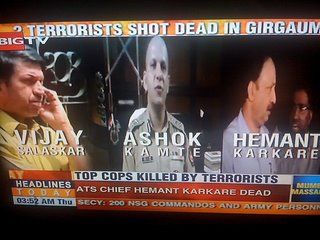
In a sense, the newscasters became unwilling bedfellows of the terrorists. One terrorist survived the attacks, confessing to the police that the original plan had been to top off the massacre by taking hostages and outlining demands in a series of dramatic calls to the media. The terrorists wanted attention. They wanted the newsgatherers to give it to them, and they got it. Their goal was not to kill a few hundred people. It was to scare billions, forcing people to change reasoning and behavior. The terrorists pitched their story by being extra brutal, providing news value. Their targets, among them luxury hotels frequented by the international business community, provided a set of target audiences for the message of their sick reality show. Several people in my professional surroundings canceled business trips to Mumbai after watching the news. The terrorists succeeded. We must count on more terror attacks on luxury hotels in the future.
Can the journalists and news organizations who were in Mumbai be blamed for serving the interests of the terrorists? I think not. They were doing their jobs, reporting on the big scary event. The audience flocked to their stories. Their business model — generating and brokering attention — was exploited by the terrorists. The journalists were working on behalf of the audience, not on behalf of the terrorists. But that did not change the outcome. The victory of the terrorists grew with every eyeball that was attracted by the news. Without doubt, one of the victims was t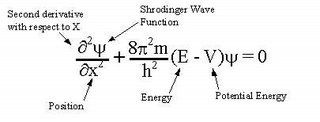 he role of journalism as a non-involved observer. It got zapped by a paradox. It’s not the first time. Journalism always follows “the Copenhagen interpretation” of quantum mechanics: You can’t measure a system without influencing it.
he role of journalism as a non-involved observer. It got zapped by a paradox. It’s not the first time. Journalism always follows “the Copenhagen interpretation” of quantum mechanics: You can’t measure a system without influencing it.
Self reference is a classic dilemma for journalism. Journalism wants to observe, not be an actor. It wants to cover a story without becoming part of it. At the same time it aspires to empower the audience. But by empowering the audience, it becomes an actor on the story. Non-involvement won’t work, it is a self-referential paradox like the Epimenides paradox 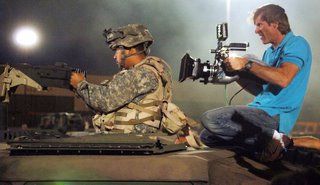 (the prophet from Crete who said “All Cretans are liars”). The basic self-referential paradox is the liars’ paradox (“This sentence is false”). This can be a very constructive paradox, if taken by the horns. It inspired Kurt Gödel to reinvent the foundation of mathematics, addressing self-reference. Perhaps the principles of journalism can be reinvented, too? Perhaps the paradox of non-involvement can be replaced by ethics of engagement as practiced by, for example, psychologists and lawyers?
(the prophet from Crete who said “All Cretans are liars”). The basic self-referential paradox is the liars’ paradox (“This sentence is false”). This can be a very constructive paradox, if taken by the horns. It inspired Kurt Gödel to reinvent the foundation of mathematics, addressing self-reference. Perhaps the principles of journalism can be reinvented, too? Perhaps the paradox of non-involvement can be replaced by ethics of engagement as practiced by, for example, psychologists and lawyers?
 between people sitting behind computers linked by a network, “the mother of all demos”, when Doug Engelbart and his team at SRI demoed the first computer mouse, interactive text, video conferencing, teleconferencing, e-mail and hypertext.
between people sitting behind computers linked by a network, “the mother of all demos”, when Doug Engelbart and his team at SRI demoed the first computer mouse, interactive text, video conferencing, teleconferencing, e-mail and hypertext.
Only 40 years after their first demo, and only 15 years after the Internet reached beyond the walls of university campuses, Doug’s tools are in almost every home and office. Soon they’ll be built into every cell phone. We are always online. For the first time in human history, the attention of the whole world can soon be summoned simultaneously. If we summon all the attention the human species can supply, we can focus two hundred human years of attention onto a single issue in a single second. This attention comes equipped with glowing computing power that can process information in a big way.
Every human on the Net is using a computer device able to do millions or billions of operations per second. And more is to come. New computers are always more powerful than their predecessors. The power has doubled every two years since the birth of computers. This is known as Moore’s Law.
If the trend continues for another 40 years, people will be using computers one million times more powerful than today. Try imagining what you can do with that in your phone or hand-held gaming device! Internet bandwidth is also booming. Everybody on Earth will have at least one gadget. We will all be well connected. We will all be able to focus our attention, our ideas and our computational powers on the same thing at the same go. That’s pretty powerful. This is actually what Doug was facilitating when he dreamed up the Demo. The mouse — what Doug is famous for today — is only a detail. Doug says we can only solve the complex problems of today by summoning collective intelligence. Nuclear war, pandemics, global warming. These are all problems requiring collective intelligence. The key to collective intelligence is collective attention. The flow of attention controls how much of our collective intelligence gets allocated to different things.
When Doug Engelbart’s keynoted the Fourth Conference on Innovation Journalism he pointed out that journalism is the perception system of collective intelligence. He hit the nail on the head. When people share news, they have a story in common. This shapes a common picture of the world and a common set of narratives for discussing it. It is agenda setting (there is an established “agenda-setting theory” about this). Journalism is the leading mechanism for generating collective attention. Collective attention is needed for shaping a collective opinion. Collective intelligence might require a collective opinion in order to address collective issues.
There is an upside and a downside to everything. We can now summon collective attention to track the spread of diseases. But we are also more susceptible to fads, hypes and hysterias. Will our ability to focus collective attention improve our lives or will we become victims of collective neurosis?
We are moving into the attention economy. Information is no longer a scarce commodity. But attention is. Some business strategists think ‘attention transactions’ can replace financial transactions as the focus of our economy. In this sense, the effects on society of collective attention is the macroeconomics of the attention economy. Collective attention is key for exercising collective intelligence. Journalism — the professional generator and broker of collective attention — is a key factor.
This brings us back to Mumbai. How collectively intelligent was it to spend thousands of human lifetimes of attention following the slaughter of hundreds? The jury is out on that one — it depends on the outcome of our attention. Did the collective attention benefit the terrorists? Yes, at least in the short term. Perhaps even in the long term. Did it help solve the situation in Mumbai? Unclear. Could the collective attention have been aimed in other ways at the time of the attacks, which would have had a better outcome for people and society? Yes, probably.
The more wired the world gets, the more terrorism can thrive. When our collective attention grows, the risk of collective fear and obsession follows. It is a threat to our collective mental health, one that will only increase unless we introduce some smart self-regulating mechanisms. These could direct our collective attention to the places where collective attention would benefit society instead of harm.
The dynamics between terrorism and journalism is a market failure of the attention economy.
No, I am not supporting government control over the news. Planned economy has proven to not be a solution for market failures. The problem needs to be solved by a smart feedback system. Solutions may lie in new business models for journalism that provide incentives to journalism to generate constructive and proportional attention around issues, empowering people and bringing value to society. Just selling raw eyeballs or Internet traffic by the pound to advertisers is a recipe for market failure in the attention economy. So perhaps it is not all bad that the traditional raw eyeball business models are being re-examined. It is a good time for researchers to look at how different journalism business models generate different sorts of collective attention, and how that drives our collective intelligence. Really good business models for journalism bring prosperity to the journalism industry, its audience, and the society it works in.
For sound new business models to arise, journalism needs to come to grips with its inevitable role as an actor. Instead of discussing why journalists should not get involved with sources or become parts of the stories they tell, perhaps the solution is for journalists to discuss why they should get involved. Journalists must find a way to do so without loosing the essence of journalism.
Ulrik Haagerup is the leader of the Danish National Public News Service, DR News. He is tired of seeing ‘bad news makes good news and good news makes bad news’. Haagerup is promoting the concept of “constructive journalism”, which focuses on enabling people to improve their lives and societies. Journalism can still be critical, independent and kick butt.
The key issue Haagerup pushes is that it is not enough to show the problem and the awfulness of horrible situations. That only feeds collective obsession, neurosis and, ultimately, depression. Journalism must cover problems from the perspective of how they can be solved. Then our collective attention can be very constructive. Constructive journalism will look for all kinds of possible solutions, comparing and scrutinizing them, finding relevant examples and involving the stakeholders in the process of finding solutions.
I will be working with Haagerup this summer, we will be presenting together with Willi Rütten of the European Journalism Centre a workshop on ‘constructive innovation journalism’ at the Deutsche Welle Global Media Summit, 3–5 June 2009.